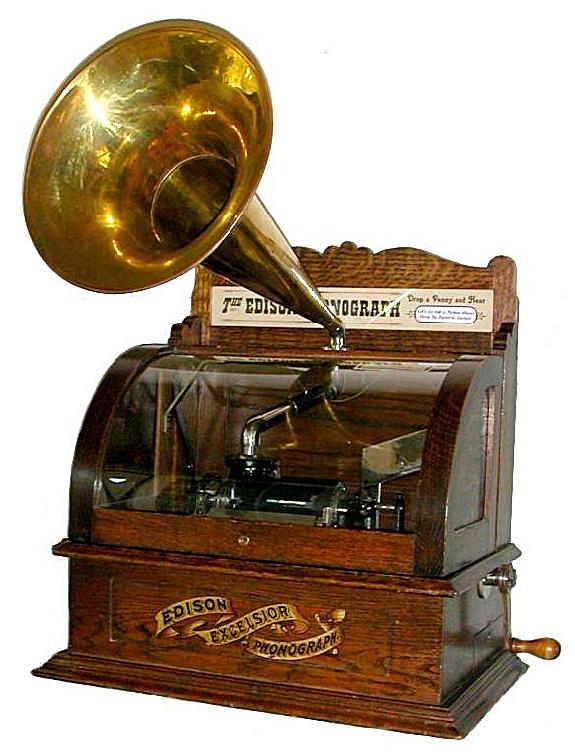

The Excelsior was the coin-operated version of the Edison Standard. First sold in 1901, it was catalogued until 1908. At $50 it was substantially more expensive than the rival Columbia AS (which cost $35), and few were sold. There are many variations among existing machines, indicating that these were assembled pretty much to order. This example likely dates to the 1906 era, by which time the novelty of a phonograph had largely worn off and the cost per play had dropped from a nickel to a penny. This meant that it took the owner 5,000 plays just to recoup the cost of the machine -- a hard way to make a profit and a further damper on sales! Dropping a penny in the slot unlocks the crank, allowing the customer to wind the machine and start the motor. A magnet at the angle in the coin chute serves as a very crude slug rejector. At the end of the record a spring pulls the reproducer to the starting position, ready for the next coin. The unusual brass horn measures 17" long, with a very deeply flared 9-1/2" bell. This machine was recently discovered in an attic in Massachusetts and, with the exception of the perfectly reproduced signboard (often missing on coin-ops), is totally original and pristine.
